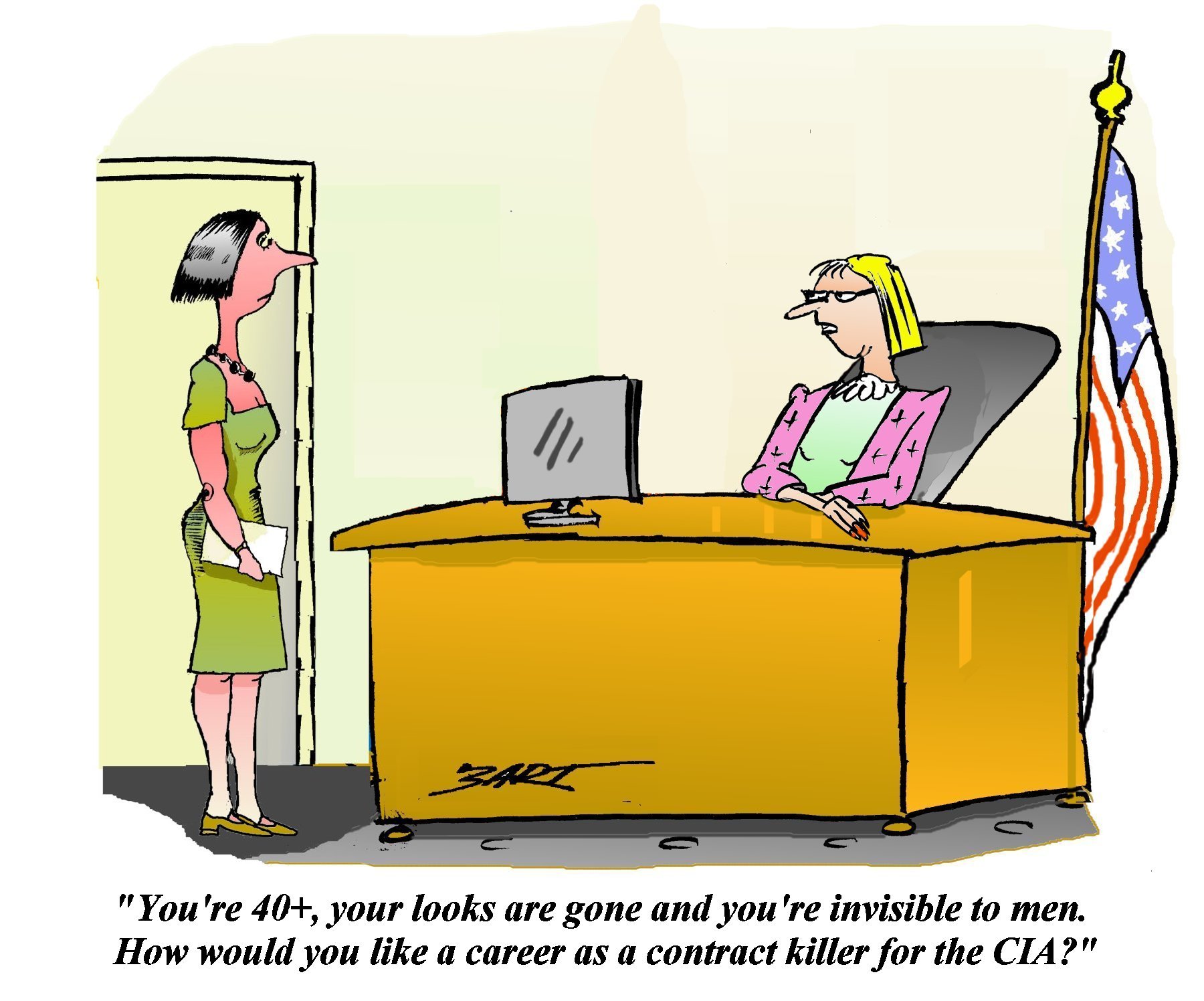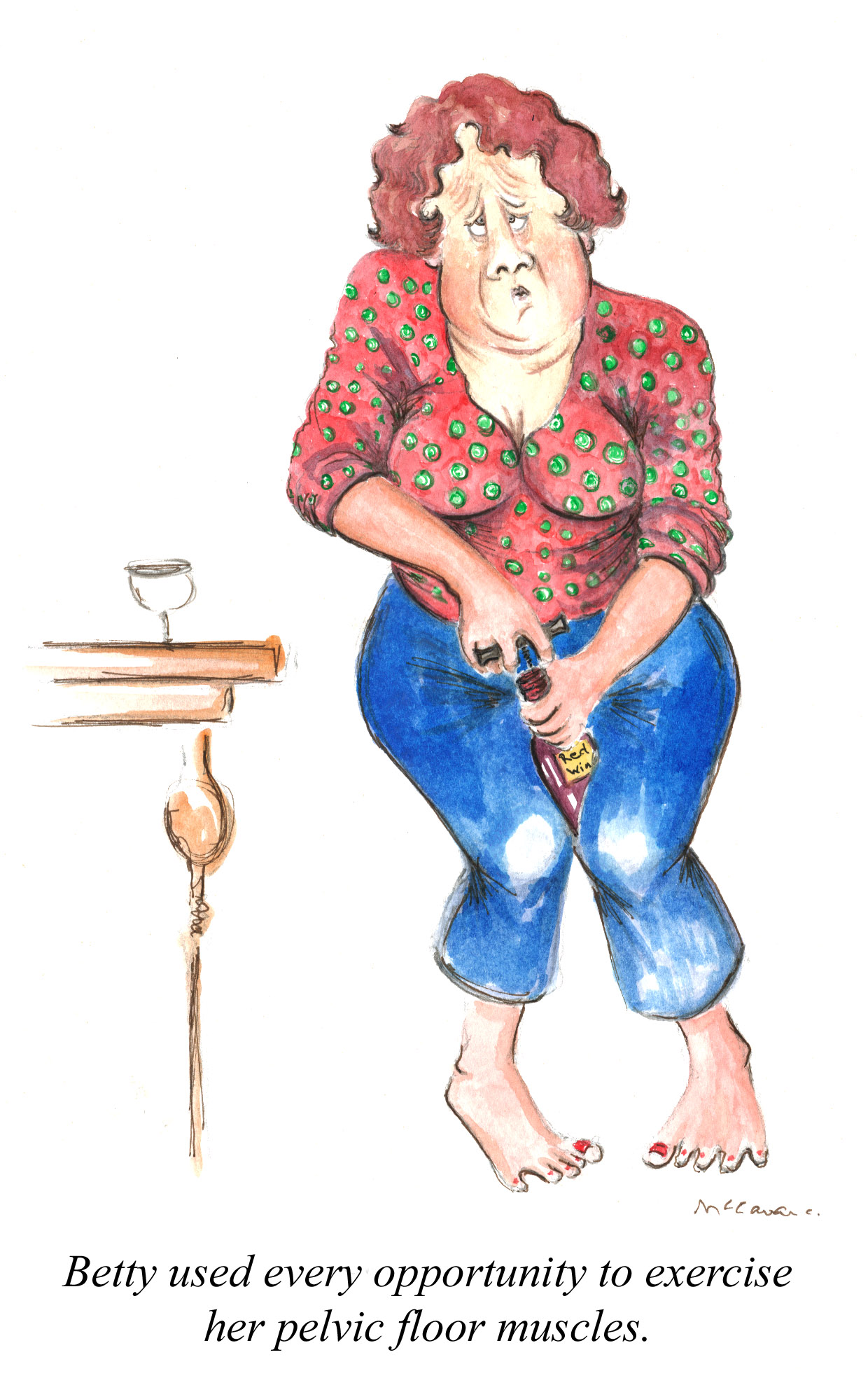Marking the ‘pause
 Back in 2009 and 2010, I wrote about a marker for menopause — the antimüllerian hormone (AMH) — which theoretically can accurately predict when a woman will enter menopause within a margin of three to four years. AMH is first detected in the ovarian cells when a woman is 36 weeks pregnant and continues until preimenopause. More specifically, it correlates to immature follicles in the ovaries whose role it is to house mature eggs. The greater the number of these follicles, the more likely it is that a woman will conceive. This is why AMH disappears as a women enters menopause, and why it has been identified as a marker of ovarian aging. Researchers have also discovered that women who have AMH levels that are below average for their age are likely to enter menopause up to 10 years before the average age of most women, 52 years. The importance of this cannot be overstated; one of the goals of this blog is to help you prepare for menopause and the changes that accompanying it. Hence, being able to predict when menopause may start can help you address certain potential health issues related to declining estrogen before they become full blown, e.g., elevated cholesterol.
Back in 2009 and 2010, I wrote about a marker for menopause — the antimüllerian hormone (AMH) — which theoretically can accurately predict when a woman will enter menopause within a margin of three to four years. AMH is first detected in the ovarian cells when a woman is 36 weeks pregnant and continues until preimenopause. More specifically, it correlates to immature follicles in the ovaries whose role it is to house mature eggs. The greater the number of these follicles, the more likely it is that a woman will conceive. This is why AMH disappears as a women enters menopause, and why it has been identified as a marker of ovarian aging. Researchers have also discovered that women who have AMH levels that are below average for their age are likely to enter menopause up to 10 years before the average age of most women, 52 years. The importance of this cannot be overstated; one of the goals of this blog is to help you prepare for menopause and the changes that accompanying it. Hence, being able to predict when menopause may start can help you address certain potential health issues related to declining estrogen before they become full blown, e.g., elevated cholesterol.
The powers that be have recently defined two phases of the menopause transition; the early phase, in which menstruation becomes more variable and cycle length changes by 7 days or more, and the late phase, in which women miss two or more periods, experiencing at least one 60 day cycle and have elevated FSH hormone levels. These phases became the anchor for the AMH study because they allowed the researchers to weigh its potential as a marker over time. That’s exactly what they set out to do (you can find the study published in the latest issue of Menopause.)
Using a new assay testing kit that appears to be more sensitive than its predecessors, they selected 44 women from a pool of 595 whose blood samples were taken randomly over a six year period and measured AMH. It was important that these women met criteria that would allow their AMH to be accurately measured; these included being over age 40 and menstruating regularly when they first had blood drawn, or having regular then irregular periods, not taking any medication that might affect their menstrual cycles and providing ample number of samples (at least three) over a five year time period.
The findings? Roughly three years before women entered what is considered the late stage menopausal transition, AMH blood levels became virtually undetectable. Moreover, the proportion of women with undetectable AMH levels constantly increased, which supports the hypothesis that AMH levels below a certain point may predict progression into the late phase of the menopausal transition. Similarly, over the time course of the study, the percentage of women with low AMH levels increased by about 71% as they approached the late menopausal transition.
The numbers in the study were small so the results, while important, stil need to be borne out in larger sample sizes. But, it appears promising that AMH can detect menopause within three years, a healthy dose of reality that may ultimately prove important in disease prevention as we age.
Read MoreWednesday Bubble: Today’s stress? Tomorrow’s disability!
Stress. There’s no getting around it. And, if you feel that it’s out of your control and that you can’t cope with it, the ill effects are widespread.
Mental stress takes its toll in so many ways; from depression and mental exhaustion to memory issues, sleep disruption, and reduced quality of life, to heart disease, diabetes and possibly musculoskeletal disease, stress literally sucks the life out of an individual. What’s more, while stress may’ take no prisoners,’ but its effects are not uniform and actually vary from person to person. As I’ve written previously, factors such as active coping and attitude are as important as a lack of control over one’s work environment. However, what about long-term consequences? According to a recent paper published online in the Journal of Gerontology, little has been written about the long-term consequences of mental stress and its toll as we grow older. And, the few studies that have examined it have actually been relatively short.
Fortunately, that paradigm has changed, In fact, when researchers examined the association between self-perceived stress and its later toll in roughly 5,500 men and women, the picture they found was not pretty. Stress symptoms were first evaluated when participants were between the ages of 45 and 58 and then reexamined four years later. They included factors such as stomach or chest pain, dizziness, anxiety, lack of enjoyment, sleep issues, lack of energy and a gloomy outlook, which were rated by frequency. Twenty-eight years later, daily living scales were used to assess the degree of disability in the same individuals; these included the ability to feed oneself, to dress, to get out of bed, prepare meals, shop, do laundry or do housework.
As mentioned, stress was inconsistent among the participants; some were profiled as having mostly negative reactions to work and depressiveness while others perceived a decline in their ability to focus and think. Some participants primarily reported sleep disturbances or physical symptoms such as chest pain, stomach ache and dizziness. Only a third reported having no stress symptoms in midlife, whereas up to a quarter reported that their stress was constant. Most importantly, constant stress in midlife was linked to significant challenges in performing the most basic of activities later in life — up to four times worse. Even more troubling? Constant stress was a deal breaker when it came to physical activity; these people had up to three times greater risk for not being able to walk a mere 1.2 miles!
Researchers say that it’s likely that “constant activation of stress responses lead to ‘wear and tear.” And while the health trajectory that leads from stress to disability is still unclear, what is clear is the need to intervene in midlife, take time to identify work stressors, change workloads and tasks, engage in regular physical activity and seek counseling if stress symptoms continue to interfere with life quality.
You only live in this body once; be sure to take care of it at all stages before lack of care takes a real toll.
Reinventing Women: Paint with a broader brush stroke…meet Aliza Sherman
I first met Aliza Sherman a few years ago at BlogHer. She walked into the hotel room that I was sharing with my sister in law, wearing a pink boa and exuding a joie de vivre air that was infectious. And that image has been indelibly sketched into my brain to this day. So, I was thrilled when Aliza wrote in response to my open call for Reinventing Women with a desire to share her story of evolution and consistent change. Just like a chameleon, it appears that deliberate transformation, however challenging at times, has allowed her to thrive.
Data have shown that when faced with significant adversity, many individuals are able to harness their experiences into ‘stress-related growth,’ thereby achieving positive and constructive change in their selves and in their lives. Aliza explains that drastic changes in her life began to unfold in the 90s, when she was held up at gunpoint and kidnapped. While she managed to escape her captors, she says that it was a turning point for her, and altered how she looked at her career. Although only in her 20s at the time, she had already lived two professional lives, first in the music business working with Metallica and Def Leppard, and then with a small non-profit working on domestic abuse. “I think that I was lucky in my unluckiness of being held up,” she says.”I lived to realize how short life really is and how I needed to pursue my own dreams.” And pursue them, she did, founding Cybergrrl, Inc — the first full-service internet company owned by a woman — and then Webgrrls International, a consortium known as the first global women’s new media networking organization.
For Aliza, reinvention refers to constantly rethinking what she’s doing — how she’s living, how she’s behaving, how she makes decisions and how she presents herself. “For many years, I’ve said I admire Madonna for the way she reinvents herself. Every few years she pushes creative envelopes, becomes a new ‘persona,’ and controls her destiny. I love that.” Similarly, every few years, Aliza has pursued new lines of business and changes what she focuses on with her work. “While I don’t fundamentally change as a person, the incremental shifts of getting older make me want to do bolder brush strokes to redefine how I spend my time and energy and put myself out there in the world.”
Putting oneself out in the world has taken on a new meaning for Aliza. While she regrets never hitchhiking across Europe right after school, she did head out into the world in the figurative sense, forging a new and important digital path for women. That path took her out of NYC and West, first to Wyoming, where she worked for the State in a public relations capacity, started an internet marketing company, and then stopped consulting and became a television producer with Wyoming Public Television and Public Radio. Not one to rest on her laurels and clearly, changing colours yet again, Aliza explains that she met her future husband, moved to Alaska and transformed her business into a social media marketing consultancy and then an agency in a matter of only three years.
The positive aspects of Aliza’s chameleon nature have a darker counterpart. She explains that because most of her constant changes occurred while single and living on her own, the impact on others was not immediately apparent to her. “Once I got married, suddenly my reinventing felt stymied and having a baby with several years of severe complications after, I was in a fog and a very bad place.” This challenge is one that continues to haunt Aliza; she says that knowing that her husband and daughter are affected by her choices makes it more difficult to find the the proper balance between doing what’s right and best for them and what’s best for her. I’m ‘still trying to work out that dance,” she says.
Still, a life without change would be a regretful life. Never believing in the ‘shoulda woulda coulda,’ Aliza’s story forces one to focus. Her advice to other women in similar predicaments, with a wanderlust and a joie de vivre, facing significant adversity? “Trust your instincts. Realize life is short and you can’t keep saying you will get to something later because later may not be an option. The worst that can happen is you fail. And then? You pick yourself up and start over.” To Aliza, failure is fuel and she says that it should be regarded as fodder for one’s next success. “Don’t let the naysayers stop you. Surround yourself with cheerleaders. Don’t live a life of regrets.”
Aliza’s mother of reinvention has clearly been to consistently paint with a broader brush stroke. Now 47, she appears to only be warming up for what’s next on the horizon.
(If you are just catching up with the Reinventing Women Series, I want to hear your story of midlife (or like Aliza, constant) change. Just like Hessie Jones and Karen-Rogers Robinson and my friend Aliza, I am sure that your personal pearls of wisdom can help thousands of other women. Write to me at flashfree111@gmail.com)
Read MoreFriday Folly: Be sure to exercise this weekend!
Between multiple pregnancies and aging, our pelvic floor muscles are frequently fighting for attention. Sometimes, you’ve gotta listen!
Read MoreReinventing Women: The Playing Field is Ripe for Change. Meet Karen Rogers-Robinson…
 The National Women’s Law Center recently reported that women continue to lag behind men in terms of job recovery, regaining less than a quarter (24%) of jobs lost during the country’s recession compared to their male peers (who’ve regained 39%). A large part of the problem driving the slower recovery among women has been the loss of public sector jobs. The lesson? While this news may appear dismal at face value, it supports Social Media/Social Technology Consultant Karen Rogers-Robinson contention that today’s financial and work economy truly is “a perfect time to reinvent yourself,” pointing out that “the playing field has been wiped clean for most.
The National Women’s Law Center recently reported that women continue to lag behind men in terms of job recovery, regaining less than a quarter (24%) of jobs lost during the country’s recession compared to their male peers (who’ve regained 39%). A large part of the problem driving the slower recovery among women has been the loss of public sector jobs. The lesson? While this news may appear dismal at face value, it supports Social Media/Social Technology Consultant Karen Rogers-Robinson contention that today’s financial and work economy truly is “a perfect time to reinvent yourself,” pointing out that “the playing field has been wiped clean for most.
In 2009, Karen was forced out of 21 years of service at AT&T, losing an essential foothold of income and perhaps the dream that many like herself had bought into. She says that during her tenure, she was “in touch with her inner Boomer” and hadn’t believed that they would force her out, particularly because she had been a top revenue producer and a top performer in her department. Yet, the job had its plusses and minuses; “While I loved the techie geek that I had evolved into over the previous 20 years,” she explains, “I HATED what I was doing! So, I decided that since my children were grown and I had only me to take care of, I should try something new.”
For Karen, this meant taking decades of basic customer service skills, dynamic telephone strategies and web page development she acquired at AT&T and diving into the social marketing and tech landscape. In fact, that transition (which took place immediately following her job loss) landed her initially as founder of Onyx Mobile Marketing, a firm connecting small business owners to their clients via text message marketing and mobile apps and now, principal of a burgeoning and evolving social media marketing and branding consultancy, SMMMDiva.. Her reinvention? A self-described “a new and improved version [of Karen] with more bells and whistles.”
Karen says that while she has felt good about the choices she’s made, the change has been drastic and has affected her lifestyle immensely. These choices have also affected her relationship with family members who long relied on her as a financial lifeline. Moreover, while she was undergoing her transition from AT&T employee to social media diva, her significant other also left.
Fortunately, despite the challenges, Karen has a good financial and emotional network in place to provide footing when the ground has been shaky. She says that this an essential in the reinvention process, as is having a strategic plan. However, she notes that she had only been three years away from having a fully vested retirement, adding “had I been smart when the first cuts [at AT&T] started, I would have started my reinvention plan [then].”
Hindsight may always be 20-20 but the time for reinvention might be now. “Why be unhappy and stressed trying to keep a high paying job when it could be taken away at the blink of any eye and not because of how you performed? Life is short; do what makes you happy.”
Read More










